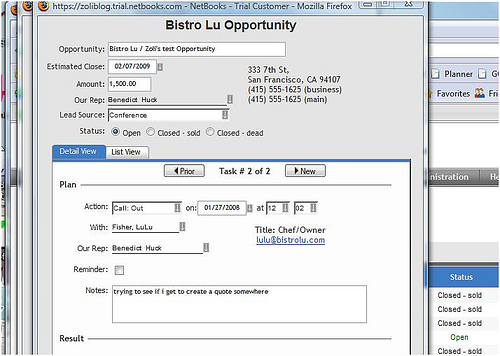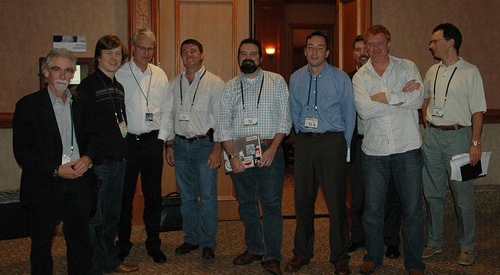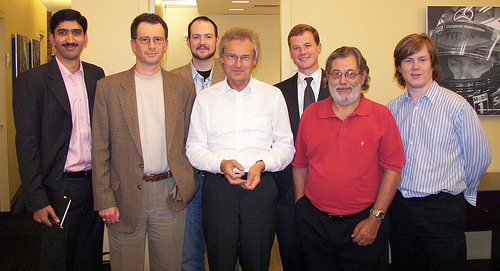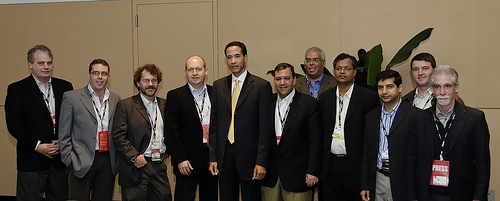I had already spent half a decade implementing SAP solutions in the 90’s when I finally got enlightened, learning the “proper term” for what I was doing: ERP, as in Enterprise Resource Planning. The term was coined by then Gartner Analyst, now Enterprise Irregular Erik Keller. Now another fellow Enterprise Irregular, Sig Rinde introduces a new interpretation of ERP: Easily Repeatable Process. Of course he contrasts that with his new acronym, BRP (not to be confused with BPR, another 90’s favorite), which means Barely Repeatable Process. BRP is what Thingamy, Sig’s lightweight, extremely adoptable system attempts to address. But it’s a very-very tough sell…
ERP traditionally addresses the core, standard, and as such repeatable business processes. Whatever it can’t handle are the exceptions: processes to be handled by knowledge workers outside the realm of ERP, by traditional means: phone calls, spreadsheets, creative thinking and a lot of emailing back and forth. Exceptions may be a fraction of business volume, but they are what corporate employees spend most of their time resolving. If that’s the case, knowledge workers who come up with innovative solutions may consider it a good practice to document them just in case the “exception” ever occurs again… and if it does a few times, well then it’s no longer an exception, but a (Barely) Repeatable Process.
Wikis in the Enterprise are a simple yet effective solution to manage such BRPs: they facilitate collaboration of all knowledge workers involved, allow some structure (structure is helpful when not pre-imposed but flexibly created) to organize data and finally, as a by-product they serve as documentation of the solution for future re-use.
Neither process-driven heavyweight systems like ERP, nor innovative, lightweight collaboration tools like wikis are the one and only mantra for most businesses (see my previous rant on “you can’t run your supply chain on a wiki“), they have their own place and should complement each other. Standard business processes and exceptions are not black-and-white opposites either: it’s a continuum, and halfway is BRP. If ERP (in the traditional meaning) tries to address to many of theses BRPs, it gets overly complex (it already is!), hard to configure and use.
This is the dilemma Sig’s system, Thingamy addresses. It’s neither free-form collaboration, nor ERP: it’s a business system framework, that allows you to model and define business processes: a tool to create your own custom-made ERP, if you like.
And therein lies the rub. Most business users don’t want to create software. They want to use it. This was the problem that caused the demise of Teqlo: the unfunded, unproven belief, that users actually want to interactively create their tools. No, they want to deal with the urgent business problems (the BRP), using whatever tools are readily available.
Thingamy’s dilemma is finding the customer: it certainly won’t be the business user. A modeling tool, simple it may be has a learning curve, dealing with it is a distraction to say the least. Thingamy’s likely “owner” would be corporate IT which would have to create processes on demand. But we all know what happens if you need to call IT to create a “program” for you. Thingamy could possibly be a handy tool for consultants, system integrator firms – but they all have their own army of programmers, toolsets..etc, which makes it an awfully hard sell, IMHO.
Thingamy could possibly be a handy tool for consultants, system integrator firms – but they all have their own army of programmers, toolsets..etc, which makes it an awfully hard sell, IMHO.
Thingamy is no doubt an elegant solution, I just don’t see the mass market need for it, because it does not solve a mass market problem. Or I should say, it does, but there’s a mismatch between whose problems it solves and who can use it. Sig himself defines collaboration as a workaround for the Barely Repeatable Processes in the Enterprise: my bet is that this “workaround” is here to stay for a long time.
Update (3/18): CIO Magazine interviews Ross Mayfield, Founder and Chairman of Socialtext, an enterprise wiki company:
Most employees don’t spend their time executing business process. That’s a myth. They spend most of their time handling exceptions to business process.
… the greatest source of sustainable innovation is how you’re handling these exceptions to business process.
… So I’ve always looked at it as we’re doing the other half of enterprise software: making this unstructured information transparent.




 TechMeme is great in threading together relevant posts, but is largely based (so I think…) on direct linking, so of course it could not auto-detect the ironic relationship between:
TechMeme is great in threading together relevant posts, but is largely based (so I think…) on direct linking, so of course it could not auto-detect the ironic relationship between:














Recent Comments